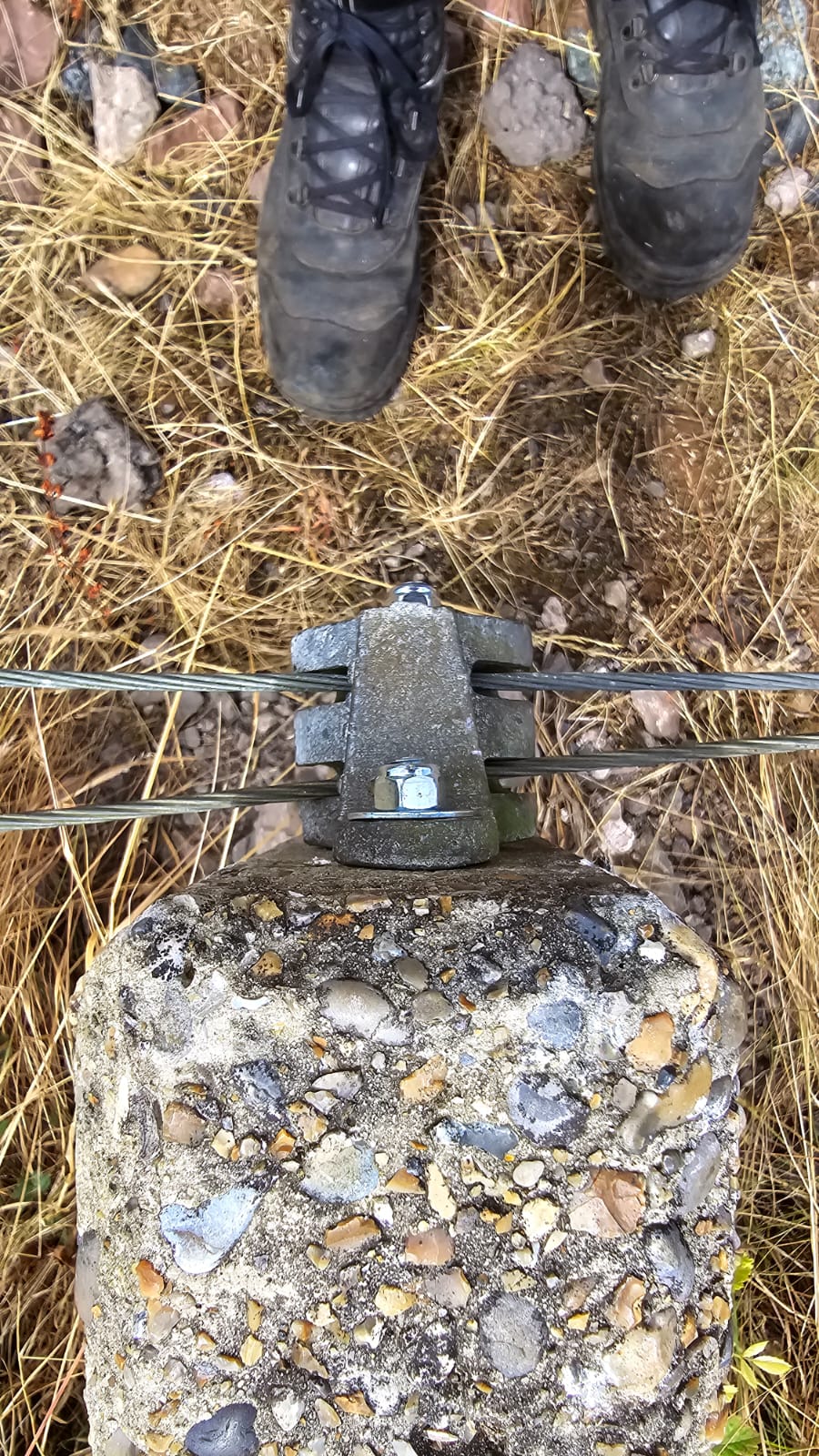Stake and Chips
...no, not that kind of steak... nor the type used to dispatch vampires (although they are a similar shape)!
 |
| A pile of recovered stakes |
In order to operate the semaphore signals from the box, wires are connected to the levers and run along to the signals by means of flat wheels (to change direction) and pulleys (held on posts) to travel the distance. It is these posts we are (well, primarily Matt is) installing. We recovered a large number of concrete wire stakes from Norfolk as part of a joint exercise in cooperation with various parties. Some of these had wire pulleys (or the remains of those) still attached.
 |
| Timmy supervises the installation of the stake (whilst keeping well away from Barras) |
Having decided the principal routing for the signal wire runs, these stakes have been spaced along the run to support the wires for the signals. It is then a case of digging out holes in the ground to plant them in. It would be far easier to just stab them into the terrain (as the name suggests ought to be possible), but there are all sorts buried below the surface and once again human moles are required!
 |
| The rodding run, stretching towards the signal box |
The run from the box up beyond the site of the Junction box (running along the side of the shed headshunt) has now almost been completed, and most of the run on the opposite side of the line, down towards the station, alongside the turntable road is also in place. A string line will be used to identify any discrepancies in height or alignment before final compacting of the ground takes place around the stakes.
 |
| A stake showing the punch having successfully removed the wooden dowel. Hopefully no concrete chippings... |
On to these stakes are attached the pulley wheel assemblies that support the individual wires. The stakes have holes pre-cast into them, with wooden dowels inserted. Into these are screwed the pulleys. This is fine, so long as you don't need to remove them! If you are very lucky, the screws will undo, releasing the remains of the old pulleys. Otherwise, you may well end up drilling the screw head remains out. However, you are still left with the dowels and screw threads. With drier weather, the wooden dowels have shrunk enough to drift out using a punch and a big hammer. This can, however, produce chips of concrete and much swapping of stakes to get the better ones!
 |
| 2-wheel pulley bolted to the stake |
 |
| Pulley now supporting 2 wires |
The next part of this sub-project will be the manufacture of wire wheel benches from sleeper and threaded bar...



Comments
Post a Comment